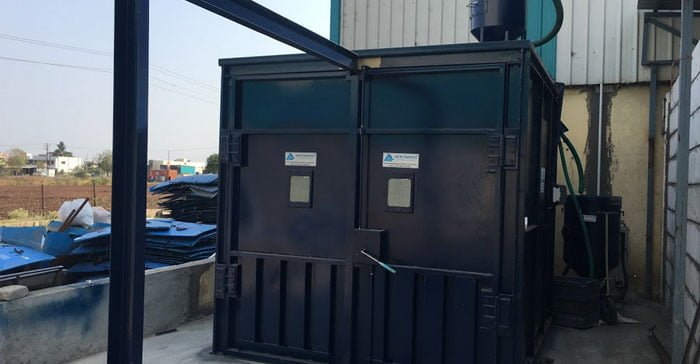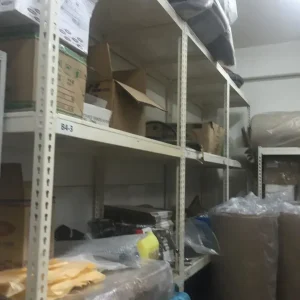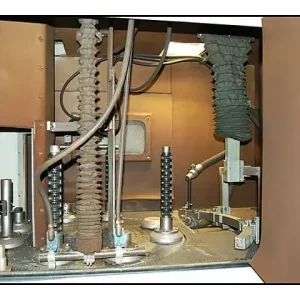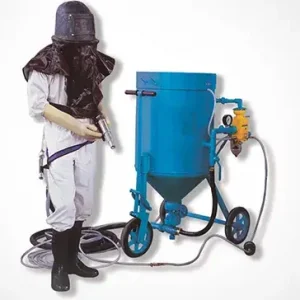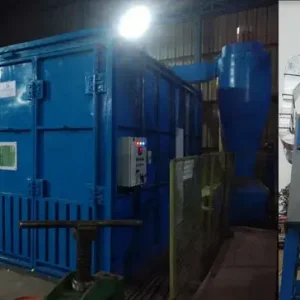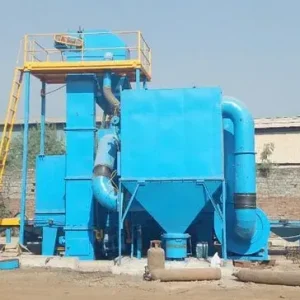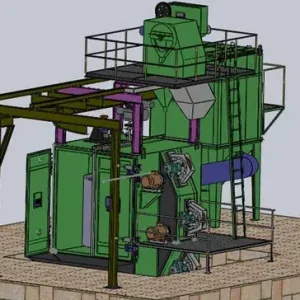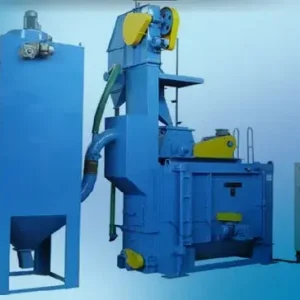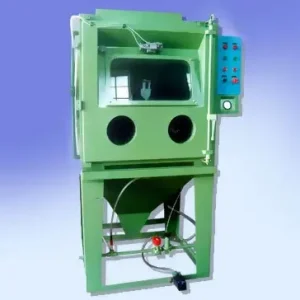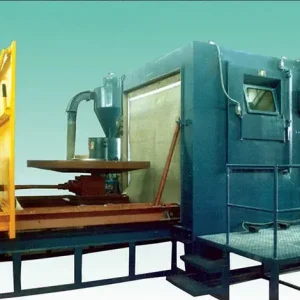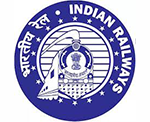A well-designed blast room system is not just about productivity—it’s also about worker safety and environmental compliance. With high-speed abrasive blasting comes airborne dust, hazardous materials, and noise, all of which can pose serious health risks if not properly managed.
The backbone of safety in any blast room is efficient ventilation. In this blog, we’ll explain how to maintain proper ventilation and create a safe, compliant blasting environment.
Why Ventilation and Safety Matter in Blast Rooms
During abrasive blasting, fine dust particles and contaminants such as rust, paint, and scale are released into the air. Without proper ventilation and safety systems:
- Air quality deteriorates rapidly
- Visibility is compromised
- Operators are exposed to respiratory hazards
- Risk of fire or explosion increases (especially with flammable media)
Maintaining clean airflow is essential for operator health, consistent blasting results, and equipment longevity.
Key Strategies to Maintain Ventilation in Blast Room Systems
1. Install High-Efficiency Dust Collection Systems
A powerful dust collector is at the heart of every effective ventilation setup. Modern blast rooms often use:
- Cartridge-type dust collectors
- Cyclone separators
- Baghouse filtration systems
These systems remove fine airborne particles generated during blasting, improving air quality and reducing cleanup time.
Tip: Ensure your dust collector is sized according to the blast room’s CFM (cubic feet per minute) airflow requirements.
2. Use Cross-Draft or Downdraft Airflow Designs
Ventilation should promote consistent directional airflow that sweeps dust away from the operator and out of the room.
- Cross-draft systems pull air horizontally across the blast zone.
- Downdraft systems pull air downward from ceiling to floor, reducing turbulence and dust recirculation.
Choose an airflow design that fits your room layout and blasting intensity.
3. Regular Filter Cleaning and Replacement
Clogged filters reduce system efficiency and can lead to:
- Poor dust extraction
- Equipment overheating
- Hazardous air build-up
Routine maintenance includes:
- Monitoring pressure drop across filters
- Cleaning or replacing filters as per schedule
- Checking for leaks or blockages
Never delay filter maintenance—it’s crucial for safe, uninterrupted operation.
4. Ensure Proper Abrasive Recovery and Media Separation
Excess spent media and dust on the floor can increase airborne particles when disturbed. Use:
- Automatic floor recovery systems
- Screw conveyors or vacuum systems
- Media classifiers and air-wash units
This not only keeps the blast room clean but also prevents recontamination and extends media life.
5. Maintain Door Seals and Room Integrity
Blast room doors must be:
Which Nozzle Size Is Best for Sand Blasting?
The Complete Guide to Sand Blasting Machines
Use Cases of Portable Sand Blasting in Construction & Marine Industries
- Properly sealed to prevent dust leakage
- Equipped with safety interlocks that stop blasting when open
- Easy to operate with minimal manual force
Inspect door seals, gaskets, and hinges regularly to maintain a fully contained blasting environment.
Safety Best Practices in Blast Room Operation
1. Equip Operators with Personal Protective Equipment (PPE)
Standard operator PPE should include:
- Air-fed blast helmets with NIOSH-approved respirators
- Protective gloves and blast suits
- Steel-toe boots
- Ear protection
Choose respirators connected to a Grade-D air supply with CO and moisture filters.
2. Install Emergency Shut-Off Systems
All blast rooms should feature:
- Easily accessible emergency stop buttons
- Automatic shutdown systems in case of power failure or system overload
- Audible and visual alarms for airflow failure or pressure drops
These systems help prevent accidents during unexpected events.
3. Conduct Routine Safety Inspections
Create a daily/weekly checklist that includes:
- Dust collector pressure readings
- Filter conditions
- Blower fan performance
- Operator PPE inspection
- Emergency systems testing
Regular inspections prevent system failure and ensure compliance with safety regulations (OSHA, ISO, CPCB).
4. Provide Operator Training
Proper training empowers workers to:
- Use ventilation controls correctly
- Identify safety hazards early
- Follow emergency protocols
- Report abnormalities quickly
Well-trained operators are your first line of defense against accidents.
Final Thoughts
Effective ventilation and safety in blast room systems are not optional—they are essential for protecting workers, meeting regulatory standards, and maintaining high productivity. By investing in proper dust collection, airflow design, and regular maintenance, you ensure a cleaner, safer, and more efficient operation.
Remember: A safe blast room is a productive blast room.

